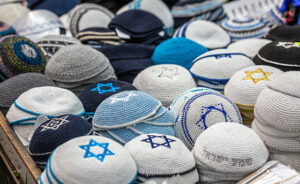 Today, Jewish rabbis, educators, authors, and pundits are all asking, “What’s wrong with the model of Jewish temples and synagogues today?” “Why are millennials not joining the old model of synagogue life?” “Why do they not see the value in what synagogues have to offer to their lives, culturally, or religiously in terms of joining as members or donors? “
Today, Jewish rabbis, educators, authors, and pundits are all asking, “What’s wrong with the model of Jewish temples and synagogues today?” “Why are millennials not joining the old model of synagogue life?” “Why do they not see the value in what synagogues have to offer to their lives, culturally, or religiously in terms of joining as members or donors? “
As an executive director of a Jewish synagogue in the San Gabriel Valley, and one who has worked in the Jewish world for over 20 years, I see these questions play out on a daily basis. Like many of my colleagues, we are asking the same questions of ourselves, our board of directors, to our educators, and frankly to our own congregants.
So let me ask you a question that might help answer this.
What is your most favorite Jewish cultural observance?
And you may ask, why am I bringing up culture and Judaism in this discussion?
Well the answer is that I literally saw a shift in my own peripheral vision this year, as I prepared to celebrate a holiday, one that has really been most important to me in the past: the holiday observance of the Passover Seder.
Now, we all know that Passover is a holiday that brings culture and history into our consciousness, where the miracle in which G-d passes over the houses of Jews during the 10th plague, which ultimately saves their lives, and eventually moves the Jews from slavery to freedom.
And we all know, Passover is experienced through a Seder, a ritual meal which exemplifies the difficulty that the Jews encountered in their journey to freedom, a “living through the experience” during the meal.
For me, the word “freedom” is exceptionally meaningful. Like many of our ancestors, my grandparents were Russian immigrants who came here during the Bolshevik Revolution. My grandfather was an officer in the Russian army, and together with his young wife and 1 year old daughter, smuggled themselves out of Russia, to eventually make it to the United States through Ellis Island. My grandparents told me that upon entering the US they literally knelt on their knees to kiss the ground of freedom.
So you ask, why do I bring this up? Well, I suppose that the concept of freedom rings through my ears, eyes and heart on a daily basis. I feel privileged to be an American Jew, living in Los Angeles, and having the “freedom” to “be”…Jewish, American, a daughter of a divorced mother, a woman, a professional woman, a single mother, etc. I do not take any of these freedoms lightly.
This year while searching for a new Seder, I found one that focused on social issues worldwide.
From the moment I read that Seder, my eyes filled with tears and I knew that from then on, the story of Passover in my home would forever be changed to an alternative Jewish Seder…one of freedom and respect for every human being in a new and important way.
So, to tie this back to my opening statement, “I believe cultural Judaism may be the answer to our Jewish future because our celebrations and observances today must be relevant and meaningful for the audiences of today. I think that my Social Justice Seder did just that, and it is my hope that we find more creative and innovative ways to bring Judaism to those who don’t feel that our grandparent’s synagogue is as relevant today as it was 50 years ago.
BY BERYL STRAUSS, EXECUTIVE DIRECTOR OF PASADENA JEWISH TEMPLE & CENTER.









